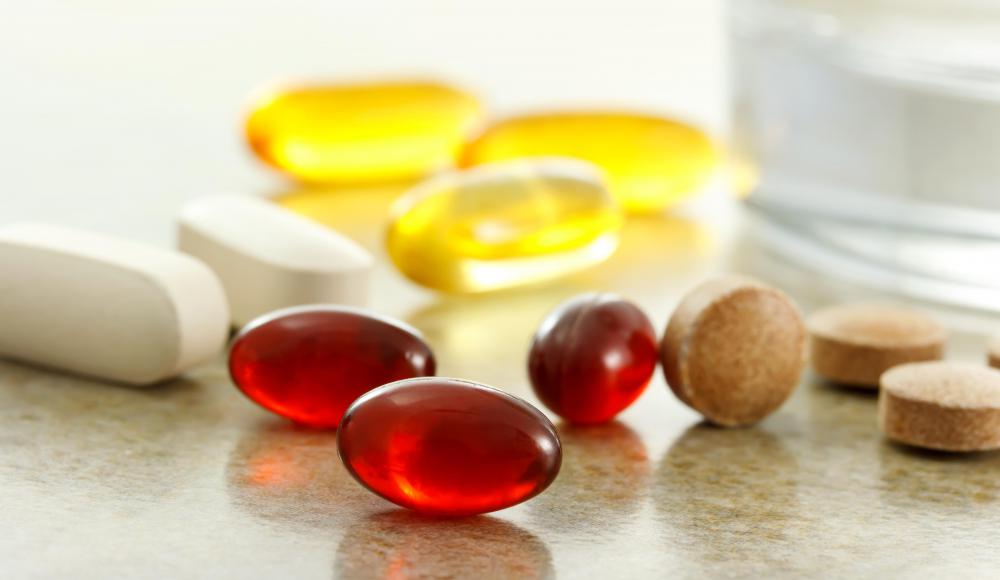At TheHealthBoard, we're committed to delivering accurate, trustworthy information. Our expert-authored content is rigorously fact-checked and sourced from credible authorities. Discover how we uphold the highest standards in providing you with reliable knowledge.
What is Cholecalciferol?
Cholecalciferol, also called vitamin D3 or calciol, is a form of vitamin D, and is synthesized by the skin after exposure to sunlight. This form of vitamin D also is added to many foods as a supplement, and it is prescribed as a medication for people who are unable to maintain adequate levels of vitamin D. While termed a vitamin, cholecalciferol technically is a secosteroid hormone, and it is structurally similar to hormones such as testosterone and cholesterol.
In terms of importance in the human body, vitamin D is virtually unequaled. The metabolic product of this vitamin, called calcitriol, is known to interact with approximately 2,000 of the 20,000 genes in the human genome. Vitamin D deficiency has been correlated with more than a dozen cancers, as well as other serious diseases such as hypertension, type 2 diabetes, stroke and heart disease.

In the presence of solar ultraviolet B light, cholecalciferol is formed from a precursor molecule called 7-dehydrocholesterol. In the liver, cholecalciferol is metabolized into calcifediol, which is further modified in the kidneys to become calcitriol. Conversion of the 7-dehydrocholesterol into calcitriol is regulated by several mechanisms. For example, conversion of calcifediol to calcitriol in the kidneys is regulated by parathyroid hormones secreted by the parathyroid glands.

With the exception of supplemented foods, vitamin D can be obtained from very few foods. The richest natural sources of vitamin D include fish oils, fatty fish such as salmon, catfish, tuna, eggs and beef liver. Supplements or fortified foods are often recommended by doctors for people who do not obtain the recommended minimum of vitamin D per day. The recommended minimum generally is between 200 and 600 international units per day, depending on the age of the individual.

Both deficiency and excess of cholecalciferol or other forms of vitamin D can cause disease. Deficiency in vitamin D, also known as hypovitaminosis D, can cause a childhood disease called rickets, which leads to malformed development of long bones such as those in the legs. This disease is rare in countries where milk is fortified with vitamin D. Hypovitaminosis D is a strong risk factor for osteoporosis and is linked to chronic diseases such as hypertension, autoimmune diseases and several types of cancer.

An excess of vitamin D is called hypervitaminosis D. Symptoms include nausea, vomiting, constipation, loss of appetite, increased thirst, dehydration, fatigue and nervousness. Severe toxicity can lead to renal failure and heart disease because of high blood levels of calcium, but this toxicity can be treated effectively with a low-calcium diet and steroid medication. It is extremely rare for vitamin D toxicity to occur as a result of dietary modifications or the use of supplements. Almost all cases of vitamin D toxicity have resulted from industrial accidents that have led to consumers purchasing fortified foods or supplements containing extremely high levels of the vitamin.
AS FEATURED ON:
AS FEATURED ON:
















Discussion Comments
This doesn't say where it comes from and preferable sources.
after reading your website, I am surprised to see that you still are recommending only 400-600 iu of vit.D, when the recommended dose by fda has been increased to be at least 2000-.
Post your comments